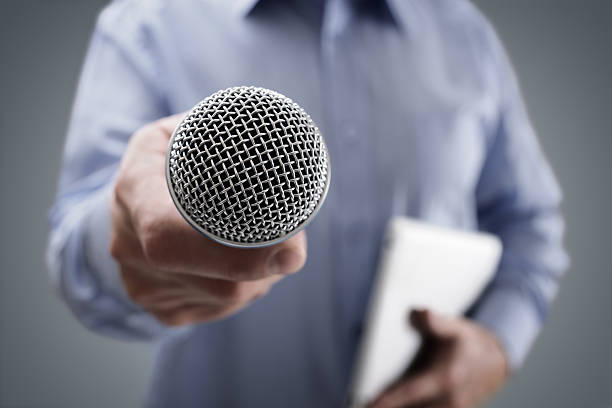Nothing in public relations is quite as rewarding as securing an important interview for a client. But when it happens, that’s not the time to relax; in fact, it’s when the work escalates. For some, this can mean an intense media training session. For others, a simple review of the interviewer’s background and expectations are all that’s necessary.
How to prepare for a media interview
We can’t all represent stars like Jeff Bezos. But we can help generate opportunities that serve them and their businesses well. Here are some tips we’ve gleaned from PR strategists and others.
Always accompany clients to interviews
Anna Mariotti, Public Information Coordinator at WSP USA, stresses the importance of clients’ having a media liaison or PR person sit in on the interview. “It adds a layer of accountability and an extra set of ears. A PR rep can speak up in a conversational manner if necessary to clarify any statements made by the interviewee that may be vague, unclear, or open to interpretation.” We agree. And when accompanying a senior client executive to a key journalist interview, we inevitably learn something.
Make judicious use of personal anecdotes and data
Most PR people agree that the inclusion of relevant data in an interview is as important as the peppering in of personal anecdotes. Today’s audiences are looking for authentic, emotionally-connecting stories that are backed up by newsworthy data, big and small. Our client Jim Curtis, President of Remedy Health Media, tells reporters about how patients with various conditions benefit from the emotional storytelling on his company’s site. These personal stories serve as an entree to the broader business success story. Readership and advertiser stats support the emotional narrative and make Remedy Health a site for potential business and advertising partners to notice.
Demonstrate thought leadership
Today’s executives must come across as industry experts. It’s important to reference trends and current world events that may impact your business. Presumably your client has already penned articles or given speeches, making access to good information a natural move. Be prepared with several interesting or unexpected nuggets of information and, where possible, offer a compelling insight or unique angle. We also recommend making the interview a conversation; feel free to ask the reporter a thought-provoking question. Any executive sitting for an interview needs to be able to provide more than just what’s happening in his company. Top interviewees should be fluent in what’s happening in the industry and how it relates to any number of newsworthy topics.
Don’t forget to have a sense of humor
This tip actually came from a former client who liked to joke a bit with a journalist before starting an interview. Even if the subject matter was serious, he found that breaking the ice with a little humor helped put both parties at ease and actually made for a more productive session. Former Twitter CEO Dick Costolo, a stand-up comic in a previous life, was famous for putting even the toughest audience at ease with humor. While the CEO you work for may not be that comedic, and you can’t force it, interviewees can usually inject innocuous humor into interview situations. But, as a cautionary note, don’t ever get too comfortable with the interviewer. Remember that they are there to do a job, not to be your buddy.
Remember the power of “I’ll have to get back to you”
In our media prep sessions, we advise spokespeople to embrace the fact that they may not have all the answers at their fingertips. There’s no shame in saying, “I don’t know off the top of my head, but I’ll get back to you.” This is in no way meant to avoid or stonewall. It’s totally legitimate to want to provide the most accurate response and beats taking a guess – and having to correct an error after the interview has run. Following up with a reporter also provides another opportunity for positive – hopefully memorable – interaction, which could lead to other interviews in the future.
Record interviews when you can to review and learn from
Reviewing taped provides an opportunity to critique and incorporate learnings for future media encounters. We recommend looking at how the interviewee does the following:
- Takes control of the interview
- Delivers the key messages
- Incorporates appropriate body language
- Speaks articulately and naturally (and not too fast or slow)
- Maintains credibility
We also look at how one takes command of each of the typical interview scenarios including “hardball” (a confrontational or negative agenda or reporter known for “off-script” questions), “softball” (more general, often with room for lengthy responses and ability for interviewee to direct the conversation) or “unprepared” (a rambling or disorganized interviewer.)
Keep social media top-of-mind
Finally, veteran crisis PR strategist Susan Tellem cautions against any executive agreeing to an interview that rises from something negative on social media – a misbegotten tweet or comment taken out of context. “It’s imperative to have a spokesperson fluent in social media,” she warns. It’s also important to ensure you have dedicated resources monitoring and preparing to respond and comment if necessary. She adds that if you don’t feel confident that your spokesperson can handle the conversation, then “get another spokesperson who can.” Given the times we live in today, that sounds about right.

